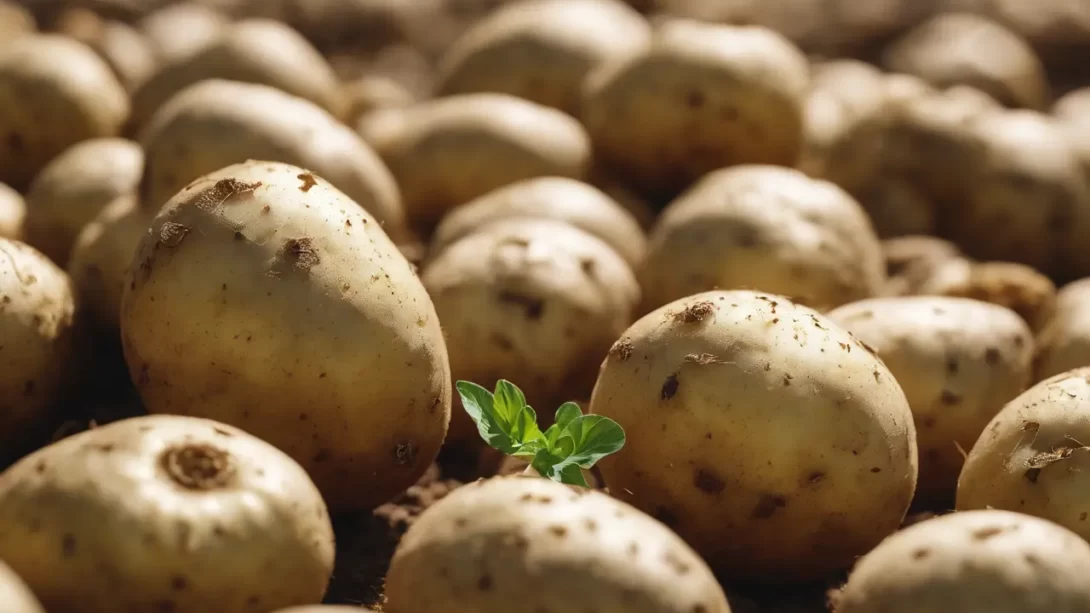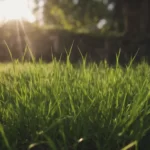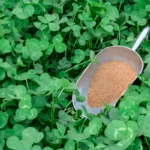Potato sprouting, commonly known as chitting, is a crucial step in growing a successful potato crop. This process involves encouraging the eyes of the potato to develop shoots before planting. Understanding and implementing the right sprouting techniques can significantly impact the health and yield of your potato plants, ensuring a bountiful harvest.
Potato Sprouting
Potato eyes are the small indentations or buds on the skin of the potato. Under the right conditions, these eyes develop into sprouts, which will eventually grow into new potato plants. Factors such as temperature, light, and humidity play a significant role in the sprouting process. Creating the right balance of these elements is essential for healthy and timely sprout development.
Selecting the Right Potatoes
The first step in successful potato sprouting is choosing the right potatoes. Seed potatoes are the best choice, as they are specifically meant for planting and are less likely to carry diseases. It’s generally advised to avoid using potatoes from the supermarket, as they may have been treated with sprout inhibitors. When selecting potatoes for sprouting, look for those that are firm and healthy, without any signs of rot or damage.
Preparing for Sprouting
Optimal Environment
Creating an ideal environment for potato sprouting is crucial. The perfect setting is a cool (but not cold), well-ventilated space with moderate humidity. A temperature range of 45-50°F (7-10°C) is typically recommended. The area should be free from frost and not overly warm, as excessive heat can hinder sprout development.
Preparing the Potatoes
Before you start the sprouting process, clean your potatoes gently to remove any dirt. Avoid washing them, as added moisture can lead to rot. If you’re using larger potatoes, you can cut them into smaller pieces, ensuring each piece has at least one or two eyes. Allow the cut pieces to dry for a few days to form a callus over the cut surface, which helps prevent rot after planting.
The Sprouting Process
Encouraging Eye Development
To promote the growth of sprouts, proper light exposure is key. Place the potatoes in a bright area but avoid direct sunlight, which can be too harsh. Some gardeners prefer to sprout potatoes in egg cartons or trays with the eye side facing up, as this can help the eyes develop more uniformly. The exposure to light will encourage the eyes to sprout.
Monitoring and Care
Regularly check on your potatoes during the sprouting process. Look for sprout growth and any signs of disease or rot. If you notice any potatoes starting to rot, remove them immediately to prevent the spread to others. The ideal sprouts should be short, sturdy, and green. Long, spindly, or white sprouts often indicate poor lighting conditions or excessive warmth.
When to Plant
The potatoes are ready to plant when the sprouts are about 1 to 1.5 inches (2.5 to 3.8 cm) long. At this stage, the sprouts are strong enough to survive planting and begin growing into new plants. Timing can vary based on environmental conditions, but this typically takes about 2-4 weeks after starting the sprouting process.
Troubleshooting Common Issues
During the sprouting process, you may encounter a few common issues. If sprouts aren’t developing, ensure the potatoes are in an environment with enough light and at the right temperature. If sprouts are growing too long or leggy, they might be receiving too much warmth or not enough light. Adjusting these conditions can help correct the problem. In cases where rot appears, it’s often due to too much moisture or poor ventilation. Ensuring a dry, well-ventilated environment can help prevent this issue.
Conclusion
Successfully getting potatoes to sprout eyes, or chitting, is a foundational step in growing a robust potato crop. This process, when done correctly, can significantly enhance the growth and yield of your potatoes. To recap, start with selecting the right potatoes, preferably seed potatoes, and create an optimal environment for sprouting. This environment should be cool, well-ventilated, and moderately humid, with good light exposure but not direct sunlight.
Throughout the sprouting process, regular monitoring and care are essential. Keep an eye on the development of the sprouts and the health of the potatoes, removing any that show signs of rot. Once the sprouts reach about 1 to 1.5 inches in length, they are ready to be planted. This stage usually occurs within 2 to 4 weeks under ideal conditions.
If you encounter issues like no sprout development or sprouts growing too long and thin, adjust the light and temperature conditions accordingly. Remember, every gardening experience is an opportunity to learn and improve. With patience and attention, you can master the art of potato sprouting.
As you prepare to plant your sprouted potatoes, feel encouraged. The effort you put into properly sprouting your potatoes sets the stage for a rewarding growing season. Whether you’re a seasoned gardener or a beginner, the journey from a sprouted eye to a flourishing potato plant is a fascinating and fulfilling aspect of gardening. Here’s to a bountiful harvest and the joys of growing your own food!



